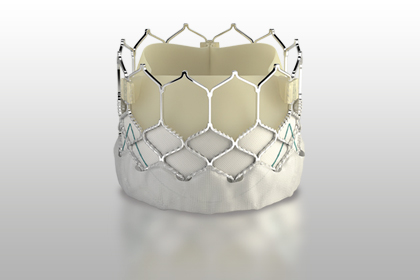
Between October 2013 and September 2014, 583 patients ─ 65% high risk and 35% inoperable ─ were treated with the new device via femoral access site (84%) or transapical/trans-aortic (16%) access site.
Population mean age was 83, with 8.4% STS score.
One year survival rate was 87.3% for the high risk group and 82.3% for the inoperable group.
There were no cases of severe paravalvular leak and those with moderate leaking (2.7%) showed higher mortality rate at one year. Low paravalvular leak had no significant association with mortality.
At multivariable analyzis, one year mortality predictors were:
- Vascular access site other than femoral
- STS score
- Disabling stroke
Conclusion
This large study on the SAPIEN 3 valve in high risk or inoperable patients showed a very low complications rate that resulted in reduced mortality at one year.
Between days 30 and 365, paravalvular leak rate did not increase and there was no association between low paravalvular leak and mortality.
Original Title: One-Year Clinical Outcomes with SAPIEN 3 Transcatheter Aortic Valve Replacement in High-Risk and Inoperable Patients with Severe Aortic Stenosis.
Reference: Howard C. Herrmann et al. Circulation. 2016;134:130–140.
We value your opinion. Feel free to leave your thoughts, comments, questions or suggestions here below. They will be more than welcome.




